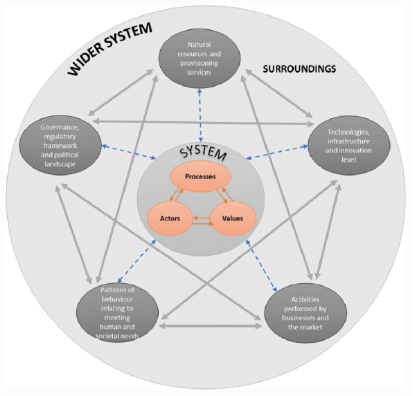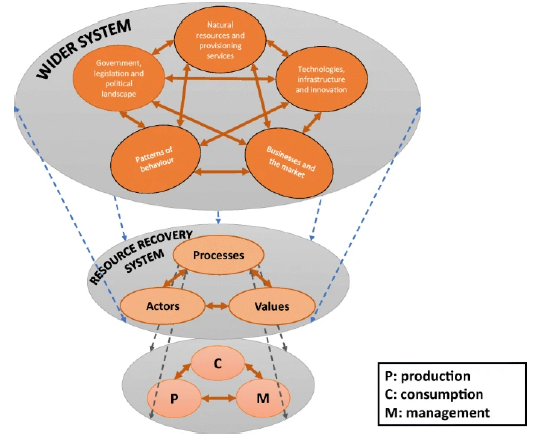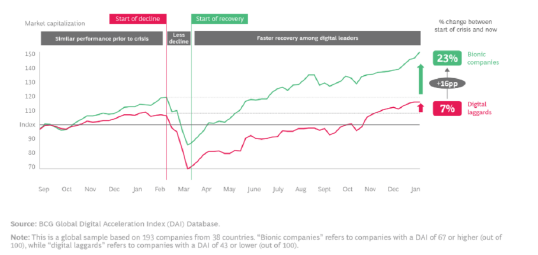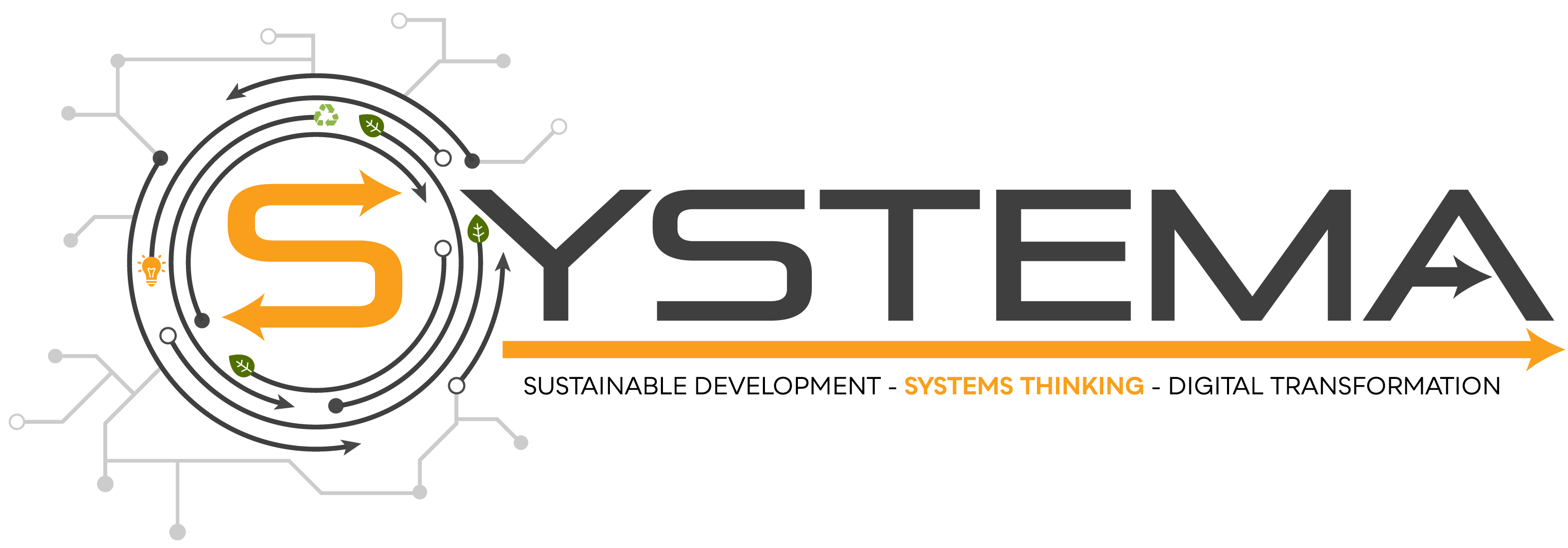Author: Eleni Zenonos
Systems Thinking has been characterised as a set of tools useful for solving complex problems that are typically not manageable through conventional thinking, and systems thinking guidelines havebeen applied in a variety of areas such as business, engineering, politics, international relations, biology, astrophysics, economics, etc.
The results of the survey which ran as part of our Erasmus+ SYSTEMA project indicated that skills and visions of management were of high importance in the fields of digital transformation and sustainability and one of the areas that the principles of systems thinking can be applied are indeed in management and leadership.
An organisation can be viewed as a system and applying a systems thinking approach provides a way of “understanding, analysing, and talking about the design and construction of the organisation as an integrated, complex composition of many interconnected systems (human and non-human) that need to work together for the whole to function successfully” (Tate, 2009).
For the whole system to succeed, it requires a performance management system that is pitched above the level of individual systems and their functional leadership. A whole system can succeed only through managers collaborating in and across several functional systems. The whole system can fail only if leadership at the level of the whole system fails, and where several senior managers are involved.
Therefore, such failure is considered a systemic failure of leadership.Visualising the organisation as a system, can therefore assist in recognising the causes and the impact of management and leadership decisions.

Figure 1. The resource recovery system with its internal sub-systems, as situated within the external sub-systems that form the whole system of systems (Iacovidou et al, 2021).
Perhaps the most common and widely known example of application of systems thinking principles is in the ever so important area of circular economy which is closely connected to sustainability.
Understanding the context in which circular economy can successfully flourish is essential in developing the capabilities needed to deal with the multi-layered challenges that currently impede progress in closing the material, component, and product loops that entails. Systems thinking can assist in understanding the way resource recovery systems operate, and in promoting deep transformational change. Iacovidou et al (2021) suggest that “transformational change needs to go beyond closing materials, components and products (MCPs) loops, and promote sustainability in the way resources are exploited, used and managed throughout the system.”
Iacovidou et al (2021) also suggest that a systemic thinking approach at multiple levels in resource recovery systems by taking into account the processes, actors and values involved in this process as depicted in Figure 1 above can play a key role in identifying and overcoming obstacles in sustainable development.
This resource recovery system is an integral part of circular economy which can be seen below as a wider system, a process that enables meaningful transformational change, as mentioned above.

Figure 2. Circular economy as a system (Iacovidou et al, 2021)
Systems thinking principles, which the SYSTEMA project is based on, has been also successfully implemented at digital companies such as Amazon and Google, which embed technology and data science into their organisations and internal and external processes from the very beginning. This is another excellent example of implementation of systems thinking in real life.
Based on this approach, an organisation’s systems function together effortlessly and “digital natives grow up in a way that creates a coherent “digital + human” or "bionic, operating model” (Bailey et al, 2021). Digital maturity of an organisation which as mentioned above can adopt a systemic approach, has clear benefits, such as faster recovery after a crisis, as evident in Figure 3 below.

Figure 3. Comparison of bionic companies vs digital laggers recovery after a crisis based on the BCG’s Digital Acceleration Index (score of companies based on 36 digital dimensions) (Bailey et al, 2021)
But these principles can be adopted by more ‘traditional’ companies that wish to digitalise their processes and procedures, which will enable them to become more competitive against digital native companies.
These are only three examples of how a systems thinking approach can be implemented in real life situations, a process which brings a range of benefits for organisations and individuals, but there are many more examples in different fields and areas.
To sum up, systems thinking principles and models, which the forthcoming courses on sustainability and digital transformation the SYSTEMA project team will produce, will incorporate can and are applied in everyday life as well as in different areas and industries.
References
Tate W. (2009). The Search of Leadership: An Organisational Perspective. Triarchy Press.
Iacovidou E., Hahladakis JN.,, Purnell P. (2021). A systems thinking approach to understanding the challenges of achieving the circular economy. Environmental Science and Pollution Research. 28. 24785–24806. https://link.springer.com/article/10.1007/s11356-020-11725-9#Sec3
Iacovidou E et al (2017) Metrics for optimising the multi-dimensional value of resources recovered from waste in a circular economy: a critical review. J Clean Prod 166:910–938.
Bailey A., Close K., Franke M.R., Grebe M., & Hutchinson R. (2021). Systems Thinking Powers Bionic Success. Retrieved from https://www.bcg.com/publications/2021/systems-thinking-powers-bionic-success on 27 October, 2021.
https://www.bcg.com/capabilities/digital-technology-data/digital-maturity

